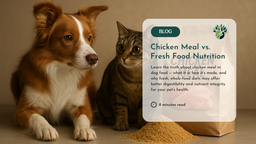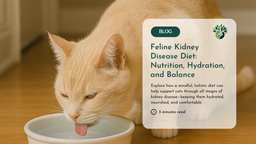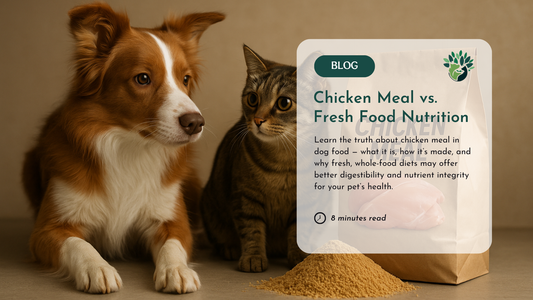September 4 marks National Wildlife Day, a day devoted to celebrating and protecting the incredible animals that share our planet. This special day was founded by Colleen Paige, who also introduced us to National Dog Day, National Cat Day, and other wonderful holidays that highlight just how much animals enrich our lives.
Colleen Paige believes that life is truly richer with animals by our side. She encourages those seeking a furry companion to consider adoption instead of purchasing from a professional breeder. For her, adopting a pet isn’t just about finding a new friend; it’s about embracing a sense of rescue and compassion, rather than a consumer-driven approach. When you choose adoption, you’re giving an animal in need a second chance at a happy life.
As a pet parent, we know firsthand the joy and companionship that animals bring into our lives. National Wildlife Day offers us a wonderful opportunity to extend that love and respect to the animals we don’t see every day—the ones that inhabit our forests, oceans, and skies. In this article, we’ll explore how you, as a pet parent, can contribute to wildlife conservation right where you live. We’ll uncover how creating a wildlife-friendly sanctuary is easier and closer than you might think, with simple steps that can make a big difference.
Urban Areas as the New Hubs for Wildlife Conservation
When we think about wildlife conservation, we usually picture pristine places like national parks or remote wilderness areas. But did you know that these areas, which we often consider the backbone of our ecosystem, only make up about 12% of the Earth’s land surface? That’s pretty small compared to the rest of the land.

On the other hand, urban areas are the fastest-growing regions in the world. With most people now living in cities—and about 5 billion expected to be in metropolitan areas by 2030—our cities are expanding rapidly to meet human needs. At first glance, this might seem like bad news for wildlife, as cities are often seen as hubs of pollution, concrete, and destruction—places where natural habitats are bulldozed to make way for roads, buildings, and infrastructure.
But here’s something surprising: wildlife can actually thrive in urban areas. Many cities and towns are located in regions with high biodiversity, where the habitats of many species overlap with human settlements. Even though these areas have been developed to serve human needs, they still have the potential to support wildlife. Some animals have even adapted to urban life, using resources like human trash, supplementary food, and exotic plants.
This isn’t just a fluke; it’s becoming a growing focus in ecology. Scientists are increasingly studying how urban areas can actually support wildlife, and they’ve discovered that cities offer unique opportunities for conservation. Instead of seeing cities as lost causes when it comes to nature, we can start to view them as potential sanctuaries for wildlife.
Getting involved in urban wildlife conservation is like giving nature a second chance—much like adopting a pet gives an animal in need a second chance at a happy life. While we may not have been able to prevent environmental degradation and urbanization in the past, we now have the opportunity to welcome nature back into our lives, right in the places where we live.
Residential Garden for Wildlife
Several studies have shown that urban conservation isn't just a theoretical idea—it really works in practice. And the best part is, it’s something you can easily do yourself. Your own backyard can actually serve as a sanctuary for urban wildlife. It might seem small compared to large-scale conservation efforts, but residential gardens can make up as much as 86% of the total urban greenspace. If we all pitch in, these gardens become incredibly important for supporting local wildlife.

For example, a study conducted in Albany City, Australia, in 2020 found that residential gardens—just like the ones in our backyards—can support a significant number of native mammals, including some threatened species. The researchers discovered that the presence, abundance, and even the reproductive activity of these mammals in gardens were often just as good as in natural bushland or urban remnant vegetation. They found that small mammals like bandicoots could live exclusively in residential areas for about seven months, with similar reproductive success in both gardens and bushland. This study helps ease concerns that gardens might only serve as ecological "traps," where animals seem to thrive but actually have low survival and reproductive rates.
Another study conducted across six U.S. metropolitan areas shows that the way urban residents manage their land along with features like tree cover and paved surfaces in the neighborhood, can have a big impact on the variety of birds we see. The study also found that most of the birds in these urban areas were native species, which shows just how important our cities are for wildlife. And interestingly, yards managed for wildlife had the most diverse and dynamic bird communities, which is great for conservation.
What does this mean for you as a pet owner? It means that the way you care for your yard can have a significant impact on supporting local wildlife. By making a few thoughtful changes, you can turn your garden into a thriving habitat for native species. This year, as we celebrate National Wildlife Day 2024, you have the opportunity to contribute to conservation efforts right from your own home.
Easy Tips to Make Your Garden a Wildlife Haven
To make the most of your wildlife-friendly garden, here are some tips for homeowners, especially those with pets, on how to create a wildlife-friendly residential garden in urban areas:
Create Safe Zones for Wildlife
- Use Fencing Wisely: Install wildlife-friendly fencing that allows small animals like hedgehogs or bandicoots to pass through. Consider leaving gaps at the bottom of fences or using permeable barriers to allow ground-dwelling animals to move freely.
- Designate Pet-Free Areas: Set aside specific areas in your garden where pets are not allowed. This provides safe spaces for wildlife to feed, shelter, and move around without the risk of being disturbed.
Manage Pets Responsibly
- Supervise Pets Outdoors: Keep an eye on your pets when they’re outside, especially if you know that certain wildlife is active in your garden.
- Keep Pets Indoors During Key Wildlife Activity Times: Many native animals are most active at dawn and dusk. Consider keeping your pets indoors during these times to reduce the risk of predation.
- Train Pets to Coexist with Wildlife: Teach your pets to respect wildlife by discouraging chasing or hunting behaviors.
- Vaccinate Your Pet: Ensure your pets are up-to-date on their vaccinations. This protects them from diseases that could be transmitted by wildlife and vice versa, helping to maintain the health of both your pets and local wildlife populations.
Plant Native Vegetation
- Choose Native Plants: Plant a variety of native shrubs, trees, and flowers that provide food and shelter for local wildlife. Native plants are more likely to attract and support native birds, mammals, and insects.
- Create Layers of Vegetation: Include ground cover, mid-level shrubs, and taller trees to create a multi-layered habitat that can support different species.
Provide Food and Water Sources
- Install Bird Feeders and Bird Baths: Offer a steady supply of food and fresh water for birds and small mammals. Place these in pet-free areas to reduce the risk of predation.
- Plant Fruit-Bearing Trees and Bushes: Fruit-bearing plants can provide natural food sources for wildlife throughout the year.
Minimize the Use of Pesticides and Fertilizers
- Go Organic: Use organic gardening methods to reduce the use of harmful chemicals. Pesticides and fertilizers can harm wildlife and disrupt the natural balance of your garden.
- Create Compost Areas: Composting not only reduces waste but also enriches the soil naturally, making it more attractive to a variety of wildlife.
Create Shelter and Nesting Areas
- Install Nesting Boxes: Provide nesting boxes for birds and small mammals like possums. Ensure these are placed high up and away from pets.
- Use Mulch and Logs: Leave piles of mulch, leaves, and logs in quiet corners of your garden. These provide shelter for insects, reptiles, and small mammals.
Encourage Insect Life
- Plant Pollinator-Friendly Flowers: Choose flowers that attract bees, butterflies, and other pollinators. This will also encourage a healthy food chain in your garden.
- Avoid Mowing Too Often: Allow parts of your lawn to grow longer, which can provide habitat for insects and the animals that feed on them.
Provide Safe Passage
- Create Wildlife Corridors: If possible, work with neighbors to create connected gardens that act as wildlife corridors. This allows animals to move safely between habitats without crossing roads or large barriers.
Use Water Wisely
- Install Water Features: Small ponds or water features can attract a variety of wildlife, including frogs, birds, and insects. Ensure these are designed to allow easy access and exit for wildlife to avoid trapping them.
- Practice Water Conservation: Use drip irrigation or water your garden during cooler parts of the day to conserve water while maintaining a healthy environment for wildlife.
Educate Yourself and Your Community
- Learn About Local Wildlife: Educate yourself about the native species in your area and their needs. Understanding their behavior and requirements will help you create a more effective wildlife-friendly garden.
- Involve the Community: Encourage your neighbors to create wildlife-friendly gardens as well. A network of such gardens can greatly enhance the urban ecosystem and provide more comprehensive support for wildlife.
Final Thoughts
As pet owners, we already know how important animals are to our lives. But our responsibility to care for animals doesn’t have to stop with our pets. By making simple changes to our gardens and yards, we can create safe spaces for wildlife right in our own neighborhoods. Whether it’s planting native plants, setting up bird feeders, or keeping an eye on our pets, each little action helps support the wildlife that lives alongside us.
As cities grow, they bring challenges, but also amazing opportunities. Our urban areas can become thriving ecosystems where people and wildlife live together, making our lives richer and helping to protect the planet’s biodiversity. This National Wildlife Day, let’s take a small step towards making our gardens part of the solution. Together, we can make a big difference, one backyard at a time.
















